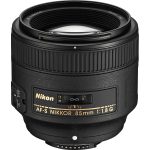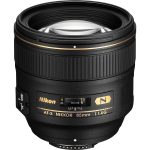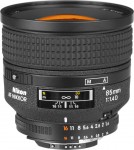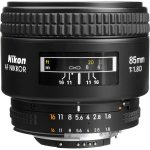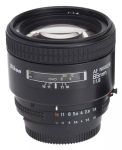Tamron SP 85mm F/1.8 Di [VC] USD F016
Short telephoto prime lens • Digital era • Discontinued
Abbreviations
| SP | Professional lens with high quality optics and robust build. Meets the highest standards and provides excellent performance and flawless image quality unachievable with traditional optical technologies. |
| DI | The lens is designed for 35mm digital SLR cameras but can be also used on APS-C digital SLR cameras. |
| VC | The lens is equipped with Vibration Compensation system. |
| USD | The lens is equipped with Ultrasonic Silent Drive. |
Features highlight



Specification
| Production details: | |
| Announced: | February 2016 |
| Production status: | ● Discontinued |
| Original name: | TAMRON SP 85mm F/1.8 Di VC USD F016 |
| TAMRON SP 85mm F/1.8 Di USD F016 | |
| System: | - |
| Optical design: | |
| Focal length: | 85mm |
| Speed: | F/1.8 |
| Maximum format: | 35mm full frame |
| Mount and Flange focal distance: | Canon EF [44mm] |
| Minolta/Sony A [44.5mm] | |
| Nikon F [46.5mm] | |
| Diagonal angle of view: | 28.5° |
| Lens construction: | 13 elements in 9 groups |
| 1 XLD, 1 LD | |
| On Canon EOS APS-C [1.59x] cameras: | |
| 35mm equivalent focal length: | 135.2mm (in terms of field of view) |
| 35mm equivalent speed: | F/2.9 (in terms of depth of field) |
| Diagonal angle of view: | 18.2° |
| On Sony DSLR-A/SLT-A APS-C [1.53x] cameras: | |
| 35mm equivalent focal length: | 130.1mm (in terms of field of view) |
| 35mm equivalent speed: | F/2.8 (in terms of depth of field) |
| Diagonal angle of view: | 18.9° |
| On Nikon D APS-C [1.53x] cameras: | |
| 35mm equivalent focal length: | 130.1mm (in terms of field of view) |
| 35mm equivalent speed: | F/2.8 (in terms of depth of field) |
| Diagonal angle of view: | 18.9° |
| Diaphragm mechanism: | |
| Diaphragm type: | Automatic |
| Aperture control: | None; the aperture is controlled from the camera |
| Number of blades: | 9 (nine) |
| Focusing: | |
| Closest focusing distance: | 0.8m |
| Magnification ratio: | 1:7.2 |
| Focusing modes: | Autofocus, manual focus |
| Autofocus motor: | Ultrasonic Silent Drive |
| Manual focus control: | Focusing ring |
| Focus mode selector: | AF - MF |
| Manual focus override in autofocus mode: | Yes |
| Vibration Compensation (VC): | |
| Built-in VC: | Canon EF (Yes) |
| Nikon F (Yes) | |
| VC features: | Mode 1 |
| Panning Detection | |
| VC efficiency: | up to 3.5 stops |
| Physical characteristics: | |
| Weight: | 700g (Canon EF) |
| 660g (Nikon F) | |
| Maximum diameter x Length: | ⌀84.8×91.3mm (Canon EF) |
| ⌀84.8×88.8mm (Nikon F) | |
| Weather sealing: | Water-resistant barrel |
| Fluorine coating: | Yes |
| Accessories: | |
| Filters: | Screw-type 67mm |
| Lens hood: | HF016 - Bayonet-type round |
| Teleconverters: | Not compatible |
| Source of data: | |
| Manufacturer's technical data. | |
Manufacturer description
Just as a painter instinctively reaches for the right brush, a portrait artist reaches for an 85mm lens. The focal length is ideal for producing a pleasing image with true-to-life facial features in accurate proportion. While a wide-angle lens makes close objects appear larger than they are, and longer telephotos compress and flatten features, the 85mm medium telephoto is just right. Plus the working distance between you and your subject is perfect for making the personal connection that’s often missing when using a zoom.
The Tamron SP 85mm F/1.8 is the world’s first* 85mm fast-aperture lens with image stabilization. Its unique design allows us to include our VC (Vibration Compensation) system—without the lens becoming too large or heavy. What’s more, our SP 85mm F/1.8 delivers edge-to-edge viewfinder brightness for ease of composition and superior low-light performance. The fast aperture of the F/1.8 also offers the perfect balance of subject sharpness and bokeh, that dreamy blur which separates your portrait subject from the background.
Chromatic aberration appears as magenta or green color fringing along edges and contours in images, especially against bright backgrounds. It happens, in part, when the optic fails to focus all colors of light on precisely the same point, and is more conspicuous in cameras with high resolution and high pixel densities. The SP 85mm F/1.8 uses LD (Low Dispersion) and XLD (Extra Low Dispersion) glass elements in the optical design to minimize color fringing and to achieve sharp and clear image quality with high color fidelity. In addition, by thoroughly reducing comatic aberrations (distortion of off-axis point source) and astigmatism, subjects that appear as a distinct point source will be captured as a distinct point source even at the edges and corners of the frame.
The SP 85mm F/1.8 is designed to provide tack-sharpness of the subject for stunning clarity and flawless image quality. At the same time, Tamron’s design philosophy embraces the notion that photographers—particularly portrait photographers—use background blur, bokeh, as a creative element to concentrate emphasis on the subject. Through numerous simulations conducted for wide-ranging blur effects, such as a gentle, melting transition from the focused to the out-of-focus areas, Tamron has created a soft, natural blur effect that achieves perfect harmony with the inescapable sharpness.
The SP 85mm F/1.8 is the world’s first* lens with a fixed focal length of 85mm and a fast aperture of F/1.8 that’s equipped with the VC system. Camera movement—often too minute to be perceptible to the photographer—is the leading cause of unpleasant photographs. In addition, newer DSLR cameras with higher pixel densities are more susceptible to subtle camera shake.
This technology makes it possible to take photographs handheld in dim light and to make optimal use of slower shutter speeds and increased depth-of-field without extreme increase of the camera’s sensor sensitivity (ISO equivalent). This is especially important in portraiture because lighting is often low and the photographer needs the spontaneity of not using a tripod or disruptive flash units.
Areas of possible ingress surrounding switches and the boundary between the focus ring and the lens barrel are protected by special seals. This provides deterrence against the intrusion of water droplets. This feature provides an additional layer of protection when shooting outdoors under adverse weather conditions.
Two highly developed lens coating technologies, eBAND (Extended Bandwidth & Angular-Dependency), which uses nanotechnology, and BBAR (Broad-Band Anti-Reflection) combine to increase light transmission and to reduce flare and ghosting to imperceptible levels. Additional techniques are employed to prevent reflections inside the lens barrel so that the SP 85mm F/1.8 delivers high contrast, sharp and clear images worthy of a fixed focal lens. This lens clearly captures detailed tones even in the shadows.
Fluorine Coating technology developed for use in industrial optics applications has been adapted to photographic lenses. The water and oil repellant coating applied on the front element surface allows safe and easy removal of fingerprints, dirt and smudges. The coating also provides an enhanced level of durability, and will sustain its effectiveness for years.
USD delivers precise and quick focusing for the SP 85mm F/1.8 fast-aperture short telephoto lens. This is crucial because of the lens’s naturally shallow depth-of-field. In addition, Full-time Manual Focus override is available at any point during the autofocus operation for deliberately shifting focus without switching the AF-MF mode selector. The 85mm is equipped with a circular-arc-type USD ultrasonic motor that’s designed to speedily move the large group of lens elements inside this fast-aperture, prime lens. The absence of reduction gears in USD means there is no backlash and no unnecessary back-and-forth movement.
An electromagnetic diaphragm system, which has been a standard feature for Canon-mount lenses, is employed in Nikon-mount lenses*. More precise diaphragm and aperture control is now possible because the diaphragm blades are driven and controlled by a motor through electronic pulse signals.
The superior technology inside the Tamron 85mm is matched by advanced external ergonomic features under a design philosophy called “Human Touch.” Improvements include altering the geometric shape and resistance of the AF/MF and VC switches to deliver comfort with secured operational feedback, and enlarging the distance scale window to maximize visibility and legibility. Even the font style has been newly developed to enhance legibility as part of the overall product design.
Travellers' choice
- Fast speed (F/1.8)
- Lightweight (660g)
- Water-resistant barrel
- Fluorine coating
- Vibration Compensation (VC) (Canon EF, Nikon F)
Notes
- Most lenses designed for the Nikon F mount are equipped with a mechanical diaphragm control system. However, the Nikon F-mount version of this lens features electromagnetic diaphragm (EMD) control system. It provides highly accurate diaphragm control and stable auto exposure performance during continuous shooting.
- EMD lenses are not compatible with Nikon D2- or D1-series, D200, D100, D90, D80, D70, D70s, D60, D50, D40, D40X, D3000 digital SLR cameras and Nikon film SLR cameras.
Lenses with similar focal length
Sorted by manufacturer name
![Tamron SP 85mm F/1.8 Di [VC] USD F016](https://lens-db.com/wp-content/uploads/2016/02/tamron-sp-af-85-18-01-870x1160.jpg)
![Tamron SP 85mm F/1.8 Di [VC] USD F016](https://lens-db.com/wp-content/uploads/2016/02/tamron-sp-af-85-18-02-150x150.jpg)
![Tamron SP 85mm F/1.8 Di [VC] USD F016](https://lens-db.com/wp-content/uploads/2016/02/tamron-sp-af-85-18-03-150x150.jpg)
![Tamron SP 85mm F/1.8 Di [VC] USD F016](https://lens-db.com/wp-content/uploads/2016/02/tamron-sp-af-85-18-04-150x150.jpg)
![Tamron SP 85mm F/1.8 Di [VC] USD F016](https://lens-db.com/wp-content/uploads/2016/02/tamron-sp-af-85-18-05-150x150.jpg)
![Tamron SP 85mm F/1.8 Di [VC] USD F016](https://lens-db.com/wp-content/uploads/2016/02/tamron-sp-af-85-18-06-150x150.jpg)
![Tamron SP 85mm F/1.8 Di [VC] USD F016](https://lens-db.com/wp-content/uploads/2016/02/tamron-sp-af-85-18-07-150x150.jpg)


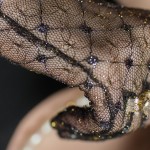





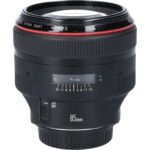
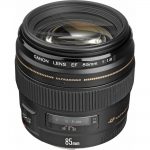
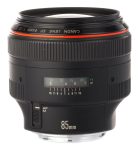
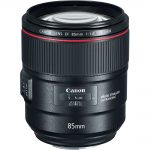
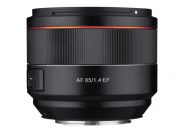
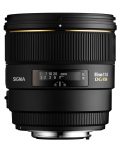
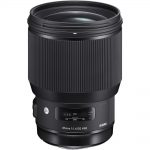


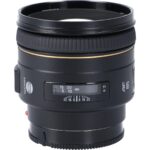

![Sony Carl Zeiss Planar T* 85mm F/1.4 ZA [SAL85F14Z]](https://lens-db.com/wp-content/uploads/2012/07/sony_85_f1-4-131x150.jpg)
![Sony 85mm F/2.8 SAM [SAL85F28]](https://lens-db.com/wp-content/uploads/2012/07/sony-85-28-125x150.jpg)
